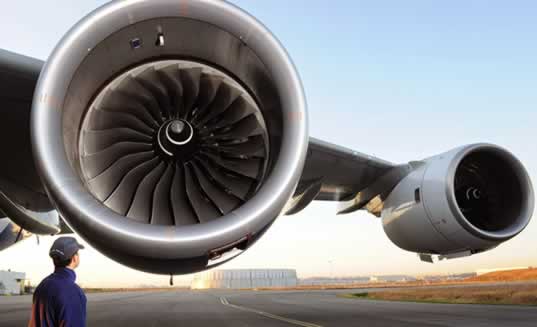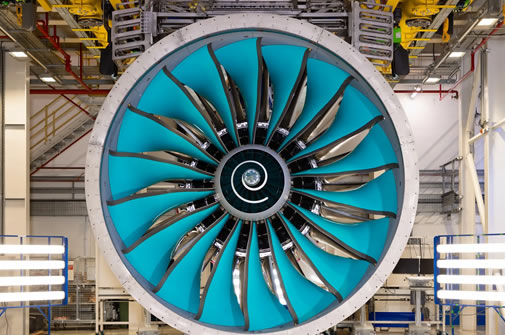2023年航材生意有哪些特色|What are the characteristics of aviation materials business in 2023
Aviation materials related business is a professional, high threshold, strong customer relationships and cross-border rich field. Personnel engaged in the field of aviation materials can be very simple, staring at a job repeated execution; It can also be uneven expertise, eight talents across the sea. Working in aviation materials related business positions, often encounter some difficulties and pain points, here is a simple comb 10, there are certainly more in the actual work. There are usually the following aspects:
1. High cost of spare parts
H Air is a well-known aviation enterprise, in the case of large fleet operation, according to the industry, models and manufacturers of all aspects of the accumulation of data, it is recommended to have at least 6%-10% of the reserve engine, but according to this proportion of the enterprise to be equipped with at least 10 mainstream models of the reserve engine, random calculation, it is also tens of millions of dollars, not a small number.
This level of demand for spare parts, whether operated through direct purchase, lease introduction or guaranteed supply by agreement, will result in extremely high costs for stakeholders. This is a common pain point for spare parts.

In addition to engines, other aircraft parts or consumables, the high cost of stockpiling spare parts is also a pain point for airlines or traders. No matter leasing, consignment or pooling model, it is impossible to get around the hard bone of high cost.
In order to obtain larger and more orders or markets, the inventory scale is constantly increasing, and the backlog of spare parts and funds has become a difficult business development pain point for many large and bloated aviation materials manufacturers to bypass.
2. Monopoly of new parts manufacturers
Due to the monopoly of aviation technology and the characteristics of industry rules, the monopoly of OEM manufacturers of new aviation materials has been a long-standing inherent pain point.
The high price of new parts and the monopoly of business models make it difficult for downstream customers and intermediate traders to have profit margins. Agent or sales authorization is the most fierce business competition mode to snatch OEM new parts.
A friend surnamed Zhang has obtained the qualification of aviation materials distributor, mainly doing the intermediary and agent business of manufacturers. According to his feedback, the business is not very good, because the current OEM agency and authorization are often open, not exclusive or exclusive form (or form is exclusive form, the essence is still free competition operation), often for manufacturers to shout for a long time, the final deal is not their own.
The most important thing is that the users of aviation materials have no bargaining power for OEM parts, and they have to push and twist Nini and finally start from the manufacturer's price pricing framework.
High price, pain, suck it up.
3. The claim process is troublesome
In the early years, the experience of airlines in cost saving and knowledge of contract enforcement were not too rich, and the attention and management of aviation material claims were not enough. With the improvement of the management of aviation use and maintenance costs, from aviation operators to repair dealers, from aviation material traders to agent service companies, they have enhanced the awareness of contract performance and aviation material claims.
Last year, after the company of a friend in Shanghai delivered a repair equipment to the user, there was an NFF failure phenomenon, the customer asked for compensation, the company pursued the repairman, repeated exchanges and lengthy negotiations have been fruitless, although the repairman's attitude is very good, but has not been able to obtain the customer's request for claims.
Finally, the company is limited to professional shortcomings, the leadership is also tired of entanglement, in order to serve downstream customers, gave up the work of claims, and paid out of their own pockets to meet customer demands.
Whether it is the sale, repair or agency service, it is either not professional, or the agreement is hidden danger, or the negotiation is lengthy, which brings a certain difficulty to the claim work.
4. Strict quality control of second-hand parts
In June, LM, a friend engaged in aviation materials business, consulted me about a problem related to second-hand aviation materials, which typically reflected the significantly strengthened quality control of domestic second-hand parts.
This piece is a high-priced piece removed from an old aircraft entering the factory for inspection and repair, and is not a time-sensitive piece, but has customized soft time inspection work requirements. Maintenance files and data records are good. Because the modified parts are in good condition and have the value of continued use, the lessee removes them for sale.
However, after the aircraft was leased, it was dismantled and scrapped by the leasing company in the repair shop. That is, at the same flight hour/cycle recording time of the aircraft, a part of the aircraft was removed through normal dismantling and repair and sold to the market as a dismantling part. Subsequently, due to scrapping and dismantling, a part of the demolition and repair parts were sold.
Friend LM this part because of the subsequent scrapping and dismantling of the machine, leading to its customers do not accept, the reason is that there is no declaration and tracking processing according to the dismantling parts (although the changed parts are dismantled and sent for repair before delivery). That's a lost trade.
This is also the result of the gradual strengthening of the control and improvement of the requirements for second-hand aircraft dismantling parts in China. It increases the difficulty of second-hand aviation materials trade and circulation.
5. High risk of professional repair
When it comes to the repair of aviation materials, it is a big topic, which requires a high professional identification ability, otherwise it is easy to increase additional costs.
Also take the case that comes up around you. Also last year, in our aviation materials management class, a student, Xiao Hu, gave us feedback and questions, their company bought an AR part (actually an electrical part), according to the market price that there is a good profit room to sell the repair tag. So they sent the maintenance provider, asked for a visual inspection and a simple functional test, and issued the standard FAA-8130-3 and AAC-038 forms.
As a result, as soon as the information of this piece was released, several customers inquired and purchased it. After the customer's engineering quality audit, it is required to accept the overhaul, although the airworthiness label issued by the visual and functional test can not meet the customer's installation requirements. After further inquiry, it is known that the work scope of its repair does not meet the work scope corresponding to the time limit of the piece, and it must be overhauled to meet the installation requirements.
The content and requirements of this scope of work control are unknown to the general aviation material salesman, and can only be identified by engineering personnel who specialize in monitoring the operation and maintenance program management of attached parts.
This part of the student company finally had to be overhauled again and delivered to the customer, and the overhaul cost was not cheap, and the result seemed to be a profitable business, and finally it was a loss.
This is a very typical impact of the professional ability to send repair, poor management, the risk is uncontrollable.
航材相关业务是一个专业、高门槛、强客户关系及跨界丰富的领域。从事航材领域工作的人员,可以很简单,盯住一个工作重复执行;也可以是专业知识参差不齐,八仙过海各显神通。在航材相关业务岗位工作,经常碰到一些困难和痛点,这里简单梳理了10条,实际工作中肯定有更多。通常可以有以下方面:
1. 备件成本高
H航是知名航空大企业,在大机队运营的情况下,根据行业、机型和厂家的各方面积累数据,建议至少要有6%-10%的备用发动机储备,可是,按照这个比例该企业至少要配备10台主流机型备用发动机,随便算算,也要好几千万美元,可不是个小数目。
这样的备件需求水平,不管是以直购方式操作、还是以租赁引进方式操作或是协议性保障供给,都会给相关利益方造成极高的成本支出。这是一个普遍存在的备件痛点。
除了发动机,其他飞机零部件或耗材,储备备件的高成本也是航企或贸易商的痛点。不管租赁、寄售或pooling等模式,都绕不开高成本的硬骨头。
为了获得更大、更多的订单或市场,不断增加库存规模,积压库存备件和资金,已经成为很多臃肿大航材商的一个难以绕过的商业发展痛点。
2.新件厂家垄断
由于航空技术的垄断和行业规则的特点,航材新件的OEM厂家垄断已经是一个长期存在的固有痛点。
新件的高价和商业模式的垄断,让下游客户和中间贸易商很难有利润空间。代理或销售授权是抢夺OEM新件最激烈的商业竞争模式。
一个张姓的朋友,取得了航材分销商资格,主要做厂家的中介和代理业务。据他反馈,生意不是很好,因为目前OEM的代理和授权往往是开口的,并不是独家或排他形式(或者形式是排他形式,实质仍然有自由竞争操作),往往替厂家吆喝半天,最后成交的不是自己。
最要命的是,航材使用人对OEM件没有议价能力,半推半就、扭扭妮妮最后还是要从了厂家价格定价框架。
高价,痛,忍着。
3.索赔流程麻烦
早些年,各航企在节约成本方面的经验和合同执行方面的知识不是太丰富,对航材索赔的重视和管理不够。随着各家对航空使用和维护成本的管理提升,从航空运营人到修理商,从航材贸易商到代理服务公司,都增强了合同履行和航材索赔的意识。
去年上海一朋友的公司在交付一个送修设备给使用人后,出现了NFF故障现象,客户要求赔偿,该公司追诉到修理商,反复交流和漫长的商谈一直无果,虽然修理商的态度很好,但一直没有获得客户要求的索赔诉求。
最后该公司限于专业短板,领导也疲于纠缠,为了服务好下游客户,放弃了索赔的工作,自掏腰包满足客户的诉求,不了了之。
不管是买卖,还是修理或代理服务,要么不专业,要么协议隐患,要么商谈漫长,给索赔工作带来了一定的难度。
4.二手件质控严格
6月份一个做航材业务的朋友LM咨询我一个有关二手航材的问题,这个问题典型的反映了国内二手件质量管控明显加强的表现。
该件是一个从一架进厂退租检查和修理的老旧飞机上拆下的高价件,并不是时寿件,但具有客户化的软时限检查工作要求。维修文件和数据记录都很好。因为改件状态还好,有继续使用的价值,所以承租人拆下出售。
然而,该飞机退租后,在修理厂原地被租机公司拆解报废了。也就是在飞机的同一个飞行小时/循环记录时刻,该飞机通过正常拆换修理拆下了一部分件,作为拆修件出售到了市场。随后又因报废拆解产生了一部分拆修件出售。
朋友LM这个件就因为该机后续报废拆解,导致其客户不接受,理由就是没有按拆机件声明和跟踪处理(虽然改件是退租交付前拆下送修的)。这样就失去了一单交易。
这也是国内逐渐对飞机拆解二手件管控加强和提高要求的结果。增加了二手航材贸易和流通的难度。
5.送修专业风险高
说到航材送修,那又是一个大课题,需要较高的专业识别能力,否则容易出现额外成本的增加。
还拿身边碰到的案例来说吧。也是去年,在我们航材管理学习班上,一名学员小胡,向我们反馈和提问,他们公司买了一个AR件(实际上是个电气部件),根据市场价格认为送修挂签出售有不错的收益空间。因此他们送维修供应商,要求目视检查和简单的功能检测后,签发标准的FAA-8130-3表格和AAC-038表格。
结果该件的信息一放出就有好几家客户咨询购买。可经过客户的工程质量审核,都要求大修才接受,虽然发了目视和功能测试的适航标签,可不满足客户的装机要求。进一步询问才知道,其送修的工作范围不满足该件时限对应的工作范围,必须大修才能满足装机要求。
这种工作范围控制的内容和要求,一般的航材业务员是不知道的,只有专门监控附部件运营和维修方案管理的工程人员才能识别。
该学员公司的这个部件最后不得不再次大修后交付客户,大修费用不菲,结果看似有利可图的一个生意,最后算下来竟然亏了。
这就是很典型的送修专业能力的影响,管理不好,风险就不可控。
版权说明:
1,全面、新鲜的航材资讯及交易概况发布
2,图片及内容涉及侵权,联系微信
3,转载或者引用本文内容请注明来源及原作者;
4,专注二手波音、空客、二手航材等相关领域




